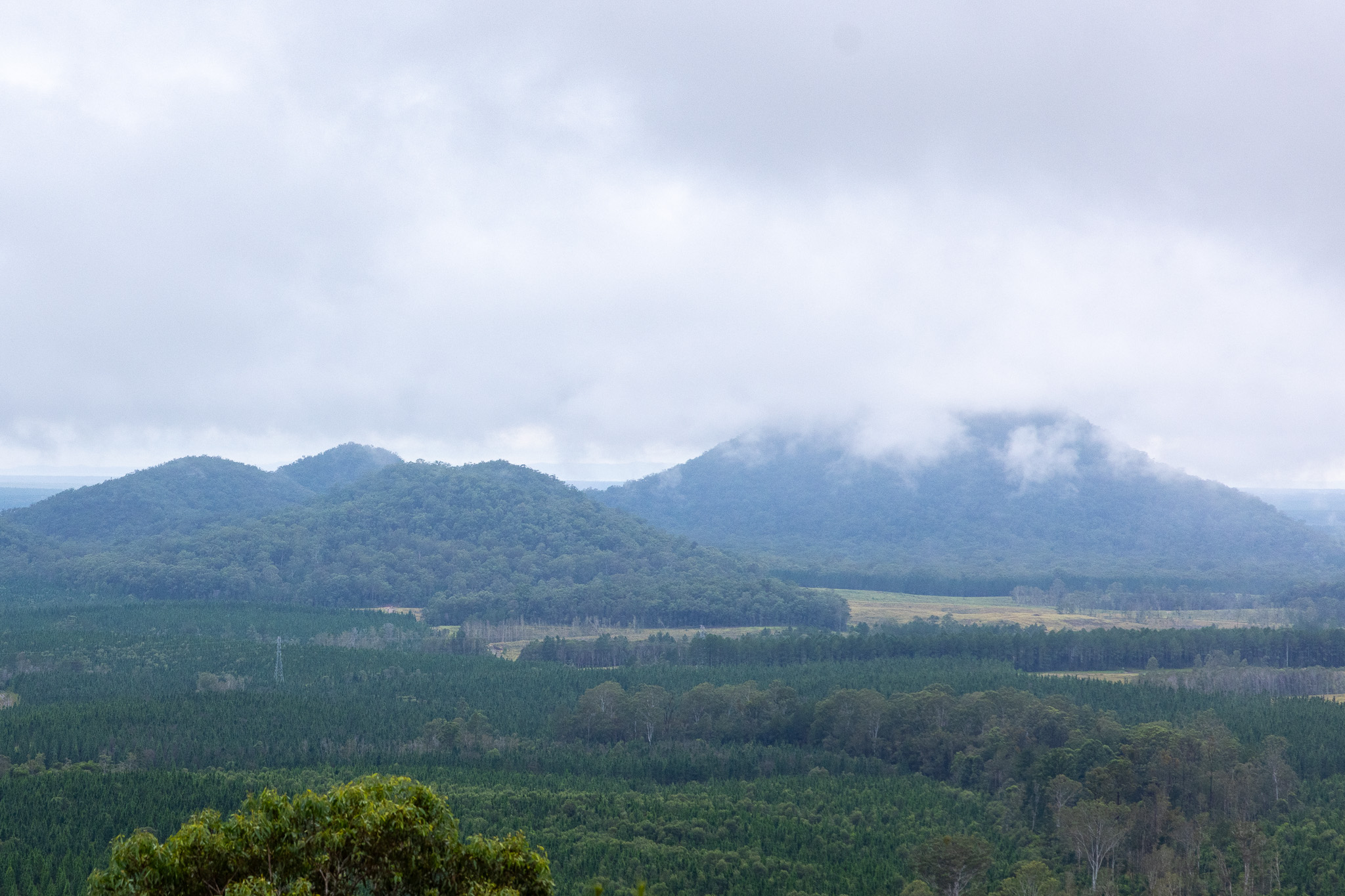I have been lazy about planning my Australia life. I passed on a trip to Perth, decided I really did not need to see Uluru this trip and finally, after a lot of prompting, decided I would go to Melbourne, Taz and then on to Sydney.
But not until next week.
So today, even though there is still move stuff to do and prep stuff for her son and his wife coming to visit for a week, Kristin agreed to drag me up to the Glass House Mountains and the Australia “Steve Irwin” Zoo.
I am excited. I cannot picture what these mountains look like, but a lot of people are excited about them. Sadly, it is a rainy day, and as I know from New Zealand, rainy days are not the best for viewing mountains.
The Glass House Mountains are a group of 13 hills that randomly and abruptly poke out of the plains near the Sunshine coast. They are not mountains, per say, although one person’s mountain is another person’s hill.
I tend to think of anything taller than me is a mountain because I do not do stairs well. Kristin climbs mountains for breakfast, so perspective and such.
They are absolutely not a mountain range because they are not attached, which make them random hills spread out over this area.
Anyway, the highest of this cluster is Mount Beerwah at 556 meters. I could not find a picture of Mount Beerwah, but upon reflection, we might have been standing on it.
The most recognizable of the group is Mount Tibrogargan. Apparently it looks like a gorilla facing toward the ocean.

So, how did these things appear? Apparently millions of years ago, the Australian continental plate drifted northward over a ‘hot-spot’ in the Earth’s mantle, causing a string of volcanoes to form along the eastern seaboard.
I am repeatedly surprised at how many of my descriptions of Australia and New Zealand start with ‘millions of years ago,’ and I have no idea why.
Over several million years, the continent continued to move north and the volcano died, but the remaining magma pushed up into the old vents.
That magma formed what someone termed ‘intrusive plugs.” I suppose because they plugged the volcanic vents. Intrusively. Again, millions of years passed, the volcanos eroded away and these plugs remained behind.

In 1770, the mountains were named by James Cook. Yes, the Peter Pan guy, who was reminded of the ‘glass furnaces’ back home in Yorkshire.

Stockphoto, by the way. The image came with the description. But you get the general idea of what James Cook was thinking of when he saw the mountains in Australia.
The best pictures I did get were from Fire Tower Number 1. The main feature at the lookout, the fire tower provides a 360 degree view of the area.
Located here in some form since the 1930’s, this tower was one of many installed in the region to defend against bushfires. Today it serves that purpose, but also offers visitors a method of viewing and identifying the surrounding landscapes.


Anyway, there is a lot of wildlife in the area. Koalas, goannas, echidnas and grey kangaroo roam about. We only noted a grey kangaroo on the side of the road.

There are also a lot of birds in the area. They are hard to catch, but we did see these.


The other feature of this particular spot was the mosaics imbedded in the concrete around the fire tower. Even though it was raining and cloudy, you can always see the mountains in full vibrant color along the path.





So now I know what an ‘intrusive plug’ is, and what makes the Glasshouse Mountains unique. This area is worth exploring more on a sunny day, when the trails are more inviting and perhaps wild life more willing to come out of their shelters.
But today was a good visit. I don’t know that I could have climbed or hiked around this area on this particular day, so I am again ever grateful for Kristin and her car. And the constant reminders from Australia’s natives…


